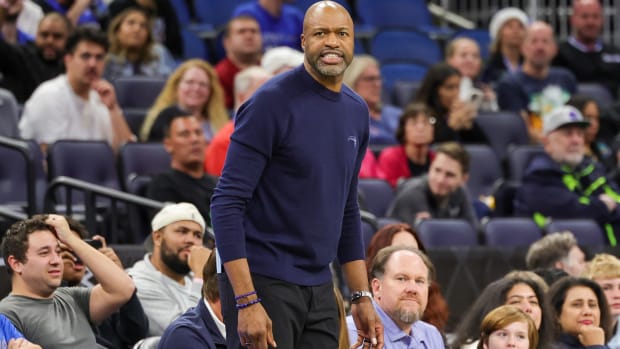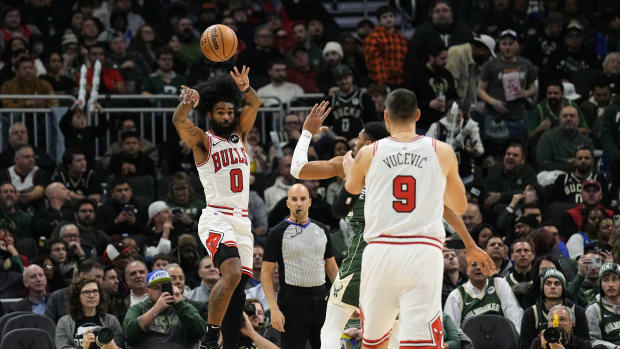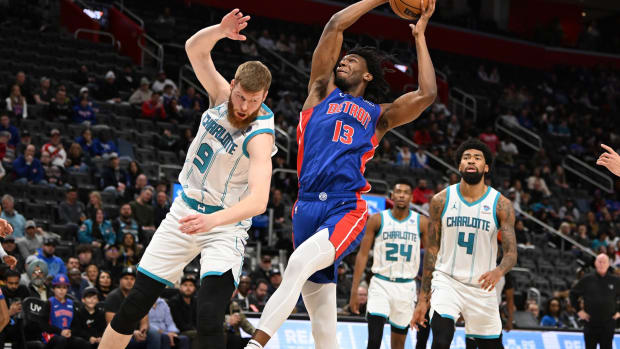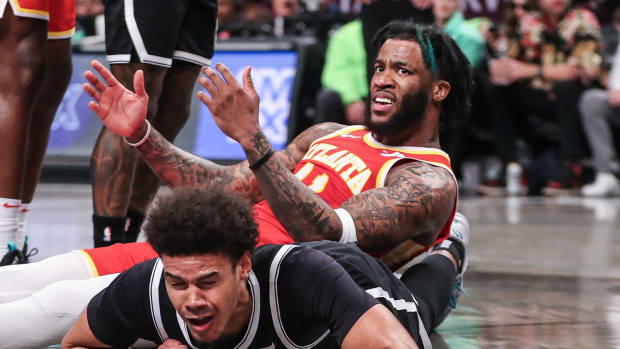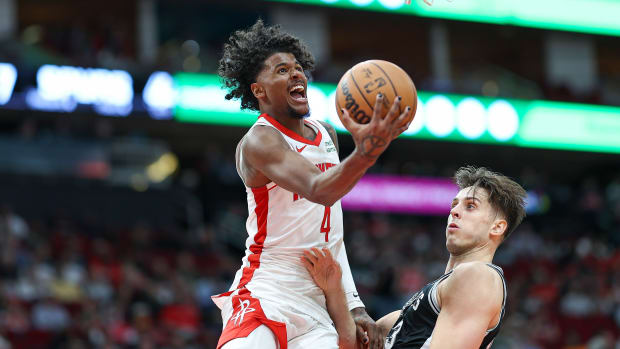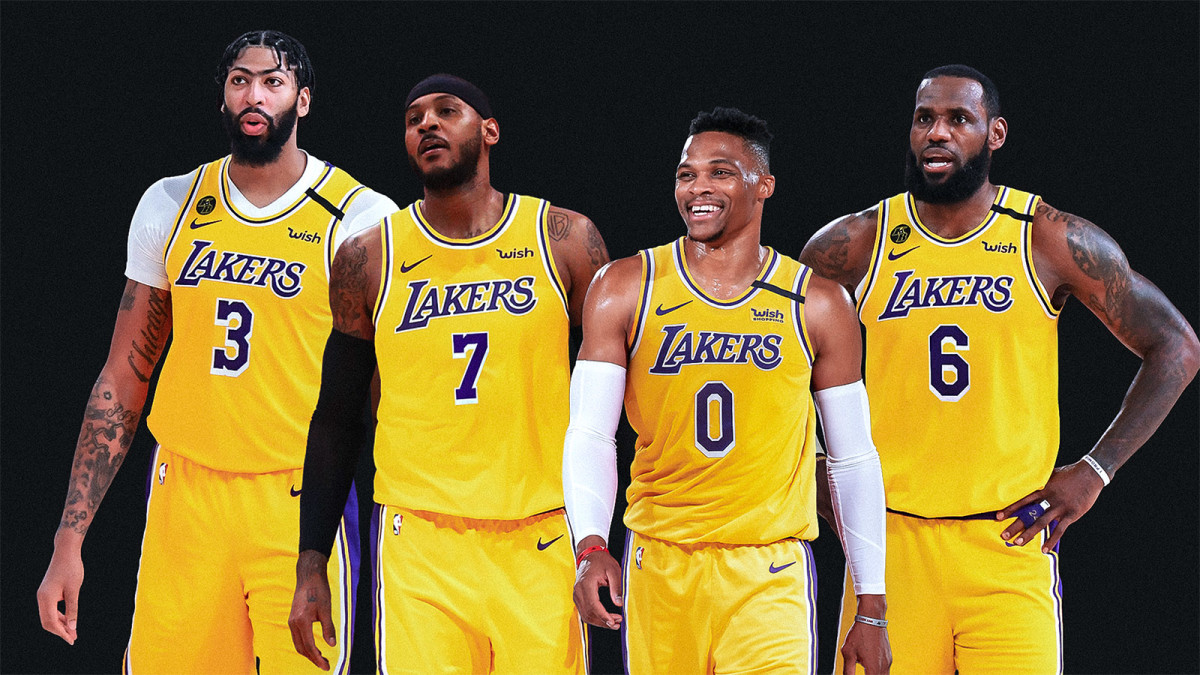
Why Russell Westbrook As a Third Option May Not Work
Depending on how you view the race for the 2022 NBA crown, a couple of key questions are at the top of the agenda. Can the Nets stay healthy this time around? Does Milwaukee have staying power, or was the Bucks’ title more the result of other teams’ injury misfortune?
In that same vein, there’s a huge question facing the Lakers that could define the league this coming season: How will Russell Westbrook—to this point always a first or second star—fare as a third option?
Clearly Los Angeles felt the star guard was its missing piece, not only surrendering rotation wings Kentavious Caldwell-Pope and Kyle Kuzma in a trade for him, but also losing the ability to add what could have been a key, floor-spacing piece in Sacramento’s Buddy Hield—someone who, in theory, would have fit the LeBron James– and Anthony Davis–led club almost perfectly.
But in the eyes of Rob Pelinka, the end justifies the means. The Lakers have the look of a terrifying top three, with an all-time great leading the way, a big man who can do nearly everything on either end when healthy, and a Sonic the Hedgehog type who logs triple doubles the way arcade-goers notch high scores.
At the same time, when parsing the question of Westbrook’s role a bit more closely, the question of fit becomes more challenging. Even after more than a decade of watching star players team up together, we often forget that it’s not as easy as merely rolling out the most talented players without regard to skill set. A player who’s thrived in a role as an alpha isn’t automatically a great second option. And while it’s easy to assume that becoming a third option would be far easier than being a No. 1 or No. 2, that may not actually be the case for someone like the 32-year-old Westbrook.
Yes, No. 3 options often get to face less talented defenders, which works in their favor.
But when you take stock of players like Ray Allen and Chris Bosh—two of the more successful third stars in recent memory—part of why they worked so well was their ability to punish defenses that left them open after throwing too much attention at the first two stars. Not only were they great jump-shooters (Bosh more so from midrange, while Allen could spot up from a state over), but they were also slippery when playing off the ball, hunting out open spaces to lose defenders who watched the ball for too long.
By contrast, Westbrook makes defenses pay much less often for standing still. Synergy Sports has him logging just 29.4 off-ball cuts to the basket per season over the past five years, even though those plays have been his most efficient form of offense over that span. (In 2020–21, Westbrook scored a whopping 65.2% of the time on off-ball cuts—a number that’s in line with his scoring rate off cuts since 2016.)
The other thing setting him apart from players like Allen or Bosh is the obvious: He can’t really shoot from outside the free-throw line. So he can’t really punish defenses with his jumper. As it stands, teams generally dare him to shoot, knowing it isn’t his strong suit.
Since the beginning of the 2016–17 season, Westbrook has hit just 30.8% of his triples—the worst rate of any player who’s launched at least 1,500 attempts over that five-season span, according to Basketball Reference’s Stathead page. This is where the comparisons to someone like Rajon Rondo’s inability to shoot fall flat. Aside from the fact that Rondo has become a league-average perimeter shooter in recent years, he also won’t take an abundance of shots that lessen his team’s chances of winning.
So that’s something to consider: Is Westbrook enough of an offensive weapon as a third option when he doesn’t possess the ball? (And, quite frankly, will it be to Los Angeles’s benefit in the moments where Westbrook has possession, since that means that James won’t have the ball?) How, if at all, does Westbrook make overextended defenses pay when they leave him wide open at the three-point line? Will there be enough spacing within the team’s lineups to allow him the room to get to the basket consistently?
Over time, we’ll surely get answers to these questions. But we already know the reactions will be swift and polarizing, as they always are with Westbrook. It wouldn’t be surprising if he starts slowly as he gets adjusted. In each of the past five seasons, Westbrook has shot far more efficiently after the All-Star break than he has leading up to it, with perhaps the most stark improvement taking place during this past year.
It’s hard to imagine Westbrook playing any harder or more aggressively than he already does (at least on offense), but if ever there were a time where he might, it’d be in Los Angeles, where he’s from. And if ever there were a teammate who would bring out a calmer, more under-control version of Westbrook—other than Kevin Durant, Paul George, James Harden or Bradley Beal—it’d probably be a late-career James, who can shoulder a solid amount of the ballhandling weight on offense.
Truth be told, much of what needs to be seen with this team will be on the other end of the floor. When healthy, the Lakers already had more than enough offense to win. (Perhaps the Westbrook acquisition was aimed at piecing together a sort of Brooklyn situation, to give Los Angeles more margin for error, even if one star goes down?) Much of that stemmed from the club’s having a top-ranked defense in 2021 (and the No. 3 defense in 2020). But now the group looks vastly different—and at least slightly worse, if not more—on the wings without Alex Caruso, Dennis Schröder, Caldwell-Pope or Kuzma. Westbrook, Kendrick Nunn, Kent Bazemore, Trevor Ariza, Malik Monk and Carmelo Anthony will replace them.
Expect the debate about whether Westbrook was the right piece for the Lakers to continue. The answer to whether he’ll fit the bill likely hinges on how he performs as the team’s third offensive option.
More NBA Coverage:
• Winners and Losers From Day 1 of NBA Free Agency
• Knicks Make Measured Moves in NBA Free Agency
• Best Signings and Worst Moves in NBA Free Agency






























